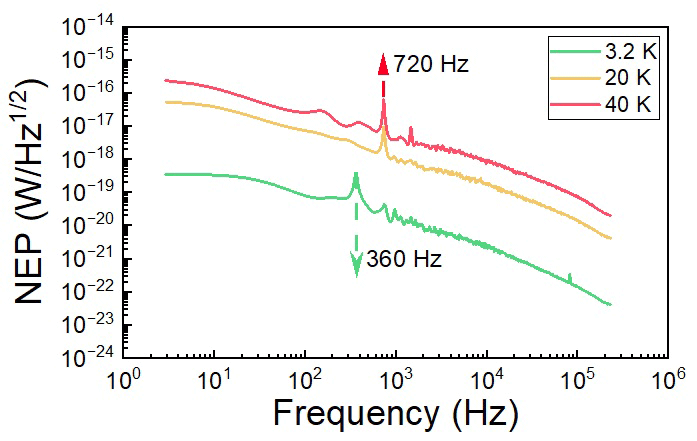ED-7-2
Superconducting Quantum Capacitance Detectors at Terahertz Waveband
09:30-09:45 30/11/2023
*Jian Chen, Lili Shi, Tianyuan Chi, Jingbo Wu and Peiheng W
Research Institute of Superconductor Electronics (RISE), Nanjing University, Nanjing 210023, China
Single photon detectors (SPDs) at terahertz (THz) waveband are necessary for the THz applications. The superconducting quantum capacitance detectors (QCDs) are proved to be ultra-sensitive at THz waveband. 1.5 THz single photon detection has been achieved. Besides their sensitivity, large array of QCDs has also developed. Therefore, it is convenient of QCDs to achieve multiplexing through a microwave feedline like MKIDs. A QCD consists of a high quality factor (Q) microwave superconducting resonators and a single cooper-pair box (SCB). The microwave resonators are fabricated using tantalum (Ta) or niobium (Nb). The SCB is made of aluminum (Al). The ground electrode of the SCB is designed to be an absorber at THz waveband. The absorber is an inductive absorber consisting of orthogonal Al nanowires. However, due to previous fabrication process, the absorber of QCDs are sensitive to the polarization of the incident THz waves. Film thickness are different in orthogonal directions. We optimized the fabrication process and the device pattern to acquire a polarization insensitive absorber in QCDs. Using this method, the markers are changed from gold to Ta or Nb, which reduces the process step of one ultra-violet alignment exposure. As for the absorber, Al nanowires in the vertical and horizontal are the same, including their width (50 nm) and thickness (20 nm). According to the simulation results, the absorptance is 50%. Superconducting resonators are lumped element type with circle spiral inductors and interdigitated capacitors. Until now, we have achieved 7×7 array. We optimized the deposition conditions of Nb and Ta films. Ta microwave resonators with intrinsic quality factors (Qi) up to 106 are characterized. Qi of Nb microwave resonators reaches 4 ×10^5.Qi of the resonators in the 7×7 array show good uniformity which indicates that our design is promising in a large QCD array. A cryogenic THz optics system is established in a dilution refrigerator. The emission blackbody materials are characterized by a THz time-domain spectroscopy system. According to the results, the reflectivity is down to -30 dB. By controlling the temperature of the blackbody, the power of THz radiation can be continuously tuned from 10^-22 W to 10^-15 W. Considering the broadband characteristics of blackbody radiation, we fabricated THz narrowband bandpass filters using Al foil. At 0.35 THz, the peak transmission coefficient of the filter reaches 84%, and the full width half maxima (FWHM) is as low as 8.4%. In fact, we can manufacture THz filters from 0.2 to 2 THz by designing the geometry of the filters. Finally, we succeeded in measuring the periodic quantum capacitance signals. However, the responsivity is relatively low due to its weak coupling to the resonators of SCB. In the future, we need to optimize the performance of the detectors. QCDs are a prospect candidate of the next-generation astronomy observation and so on.
1. Shaw, M. D., J. Bueno, P. Day, C. M. Bradford, and P. M. Echternach. Physical Review B79 (14): 144511,(2009).
2. Echternach, P. M., B. J. Pepper, T. Reck, and C. M. Bradford. Nature Astronomy 2 (1): 90-97, (2018).
This study was supported by National Nature Science Foundation of China (62227820, 62035014, 62004093, 62288101, 62027807). It was also partially supported by the Fundamental Research Funds for the Central Universities and Jiangsu Key Laboratory of Advanced Techniques for Manipulating Electromagnetic Waves. J. W. acknowledge the support from Xiaomi Young Scholar Program.
